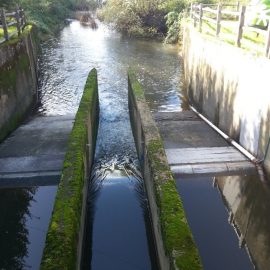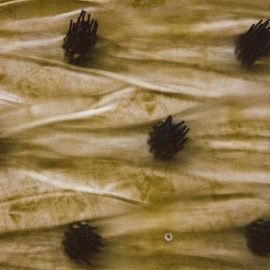Low-head gauging weirs are extensively used to monitor river discharge and are essential for management practices. However, they also prevent, limit or delay upstream fish migration. In England, the Environment Agency operates a network of over 1000 gauging weirs and mitigating their impact on fish movements is considered a priority. There is need for a fish pass solution that is effective for a wide range of fish species (including weaker swimming non-salmonids), does not interfere with gauging accuracy or accumulate debris and that is low cost. Research at ICER aims to meet these requirements by developing an innovative solution consisting of a staggered array of bristle clusters. Developed through the application of hydraulic theory, extensive open channel flume experiments are being conducted alongside field studies employing Passive Integrated Transponder (PIT) telemetry. Preliminary results from studies with coarse fish (including roach, Rutilus rutilus and chub, Squalius cephalus) are encouraging. This project is funded by the Engineering Physical Sciences Research Council (EPSRC) and the Environment Agency (England).
Media:
People:
Daniella Montali-Ashworth
Dr Gustavo de Almeida
Dr Andrew Vowles
Prof Paul Kemp



